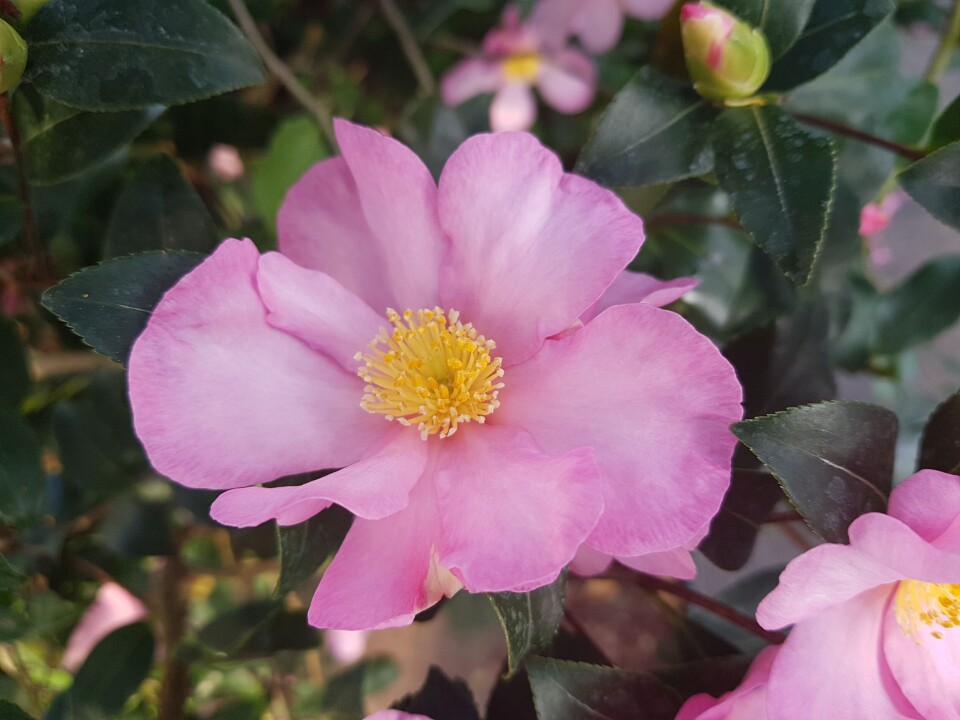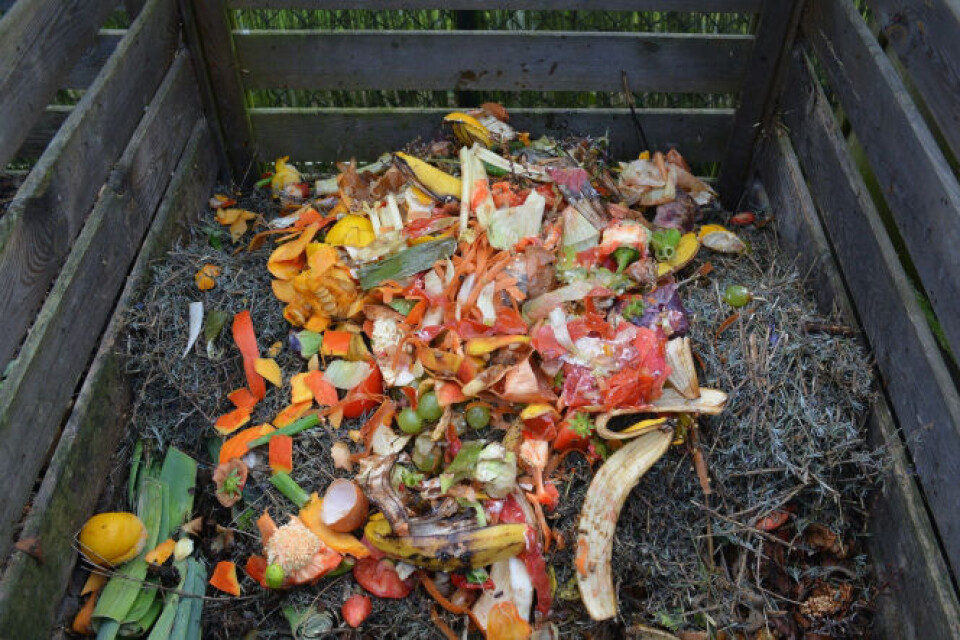-
What you should do to your garden in France in spring
Weeding, pruning, sowing, preparing the lawn…here is how to welcome sunnier days
-
Mimosa is pretty…but ‘posing threat to biodiversity’ in south of France
The flowers are prized in the region, but not everyone is thrilled to see their spread
-
Now is the time for people in France to ‘scarify’ their lawn
The practice, which should be done twice a year, enables the grass to thrive
Gardening in France: Autumn camellias and composting tips
How to make the most out of your composting bins and autumn-flowering camellias are back as the garden focal point

I am shortly going to be overcome by ‘camellia envy’. It happens every year when I see other gardeners posting their online pictures of the autumn-flowering camellia, Camellia sasanqua.
These beauties are not really the best choice for an area like mine that regularly experiences heavy winter freezes, so I have tended to steer clear, sadly forgoing their delicate perfume.
However, it occurs to me that since they are smaller in stature than the winter- to spring-flowering camellias, they should make good subjects for pots in conservatories or greenhouses – and even on balconies, provided you provide a good break against wind, the number one enemy of luxuriantly foliaged evergreens. Perhaps I will give them a whirl after all?
They prefer the same sort of soil or compost as a hydrangea – neutral to acid – and are more tolerant of strong sunlight than their better known cousin, Camellia japonica. Make sure that your compost or soil is not too heavy (maybe add bark or grit?): although they insist on moist soil, they will resent water-logging. I like the look of the large, vibrantly pink flowers of ‘Paradise Belinda’, growing to no more than 1.5m and displaying an open face with stunning yellow stamens (pink and yellow – only nature can pull that one off!).
A sister plant called ‘Paradise Pearl’ has white to rosy pink flowers that are more fully double, resembling a gardenia to my eye. ‘Yume’ is similarly small in stature and has a very simple white flower, blushing pink – she’s for you if you prefer delicate understatement.
If you are growing in pots in a cold area, give the pots a frost-protective wrap to stop the roots freezing in winter: that is the fastest way I know to kill any evergreen...
Planning for ‘black gold’
It is the time of year when my thoughts turn to what is going on in my compost bins. Sometimes when I open the lids I discover my results are as crumbly and open as ever I could want – the true ‘black gold’ that we all dream of.
My ‘black gold’ goes on the potager, of course, and also makes a deep, nourishing bed at the base of my roses: combined with careful pruning below any black spot lesions on the rose stems it ensures that black spot shows up very late, if at all, during the 2022 season. There is never enough of the precious stuff – I would like to put a thick mulch over every area I am cultivating, because it has visibly transformed the lumpy clay I inherited and causes the worm population to explode in its wake.
However, sometimes I am disappointed: taking the lids from my bins reveals a thick sludgy mess that, nevertheless, I know I will use.
Here are a few guidelines that have helped me out:
- It is best to compost in containers – they are tidier and heat is essential for fast composting. The larger the better (anything over one cubic meter is perfect).This is a useful way to recycle old wooden pallets if you tie them together – try lining the gaps with cardboard to keep the temperature up in your heap. You could even paint them to match a colour palette (forgive the pun!) you have going on in the garden already.
- Forget store-bought activators! I ‘cultivate’ (ha!) the odd tonne of comfrey, borage and nettles in my garden and these are ideal activators. I like the fact that stems of all three tend to be quite tough and woody by the end of the season and that mix of soft with slower rotting material helps fend off the sludge.
- Add kitchen scraps mixed with screwed up paper as well – we have a laudable tendency to recycle paper and cardboard these days, but the compost bin may appreciate it more. Aim for about 25 to 50 per cent of soft green stuff, with the remainder coming from woody stems, cardboard, straw, and wood chippings.

- To avoid sludge, build carefully in alternating layers of woody material and soft foliage. To do this efficiently ‘on the hoof ’, you really need several bins – I have three and I fill two in the course of the season. The last applied layer in one bin will be woody, while the last in the other will be soft green, and so on. The third sits and ‘matures’ without interference.
I hate those continuous reminders to ‘turn’ my heap. Certainly, it means your heap will rot down faster. But, since I tend to laziness, I never turn the heaps, but will place less rotted material in an empty bin when spreading the compost in late winter and early spring. Mostly, it works.
We did a little experiment with seed sowing in spring this year. Sunflowers were sown into 1) bought-in potting compost, 2) garden soil and 3) the results of the compost heap – you guessed it, germination was best with the home-made compost.
But for really classy potting compost, invest in a large wormery. You can add anything that comes as waste from the kitchen, including the meat scraps that would attract rats in a classic compost bin.
The crumbly results will bring a tear to the eye – add a little grit or garden soil and your germination rates will explode next spring.
Related stories
Gardening in France: Autumn is the time to buy your bulbs
Beautiful private gardens open for Autumn visits in France
























